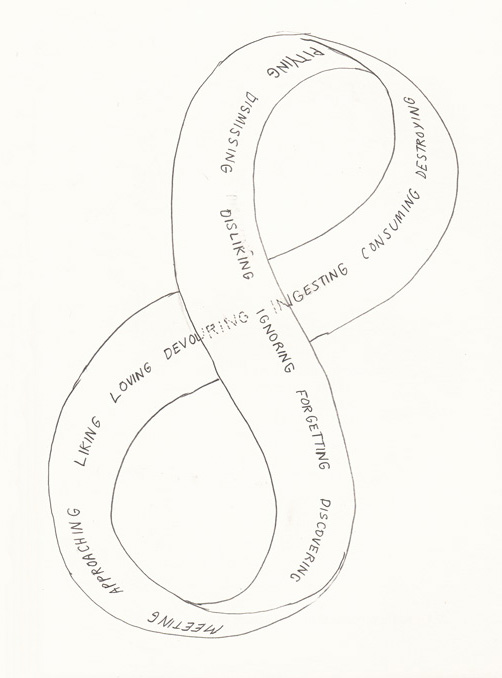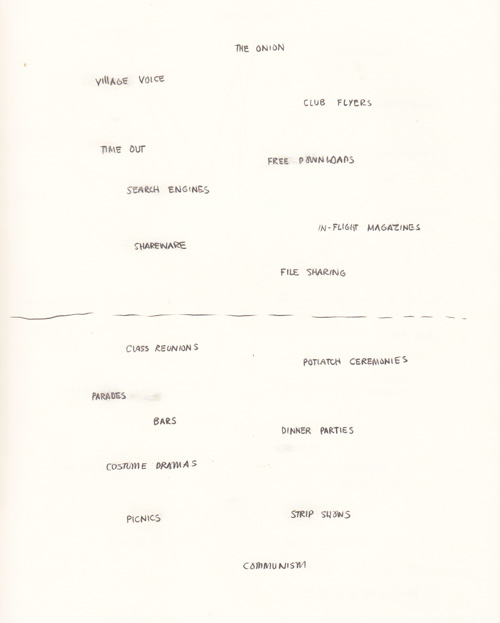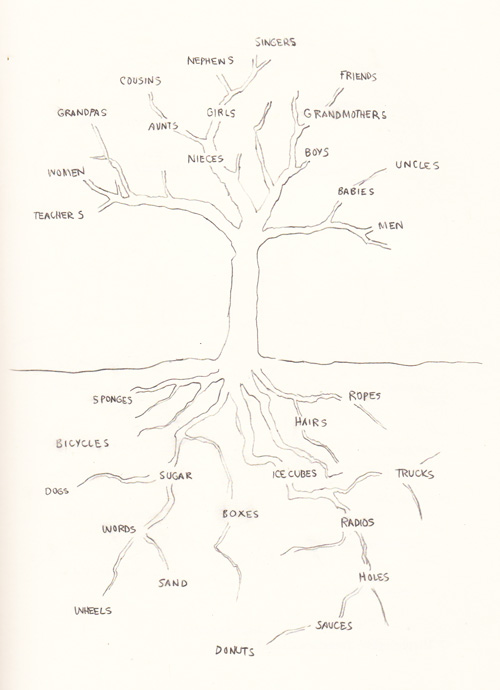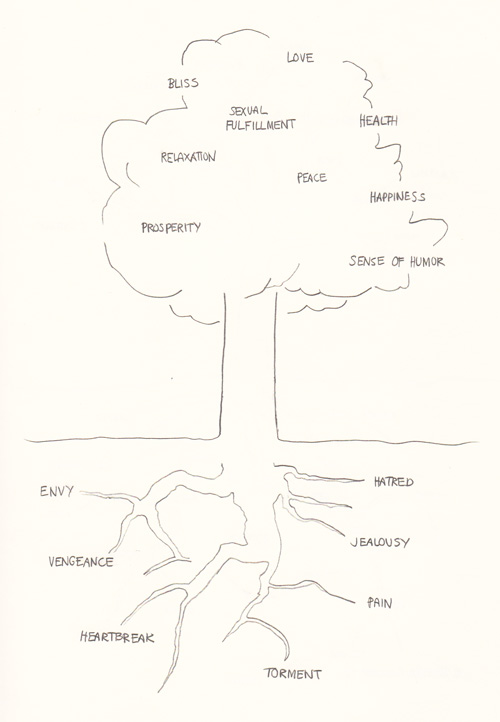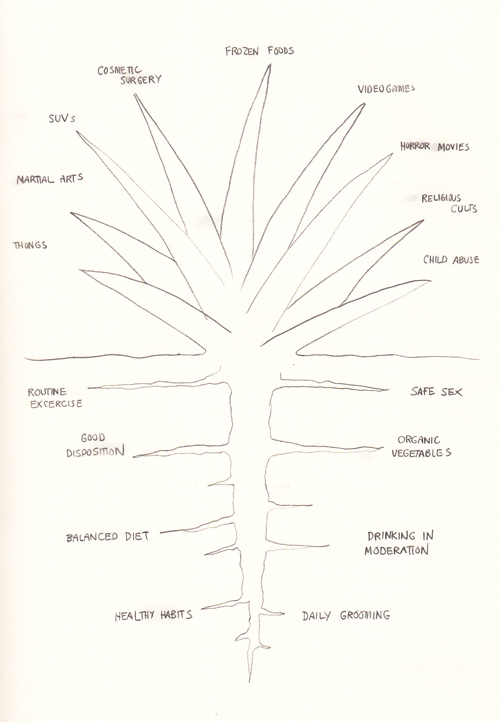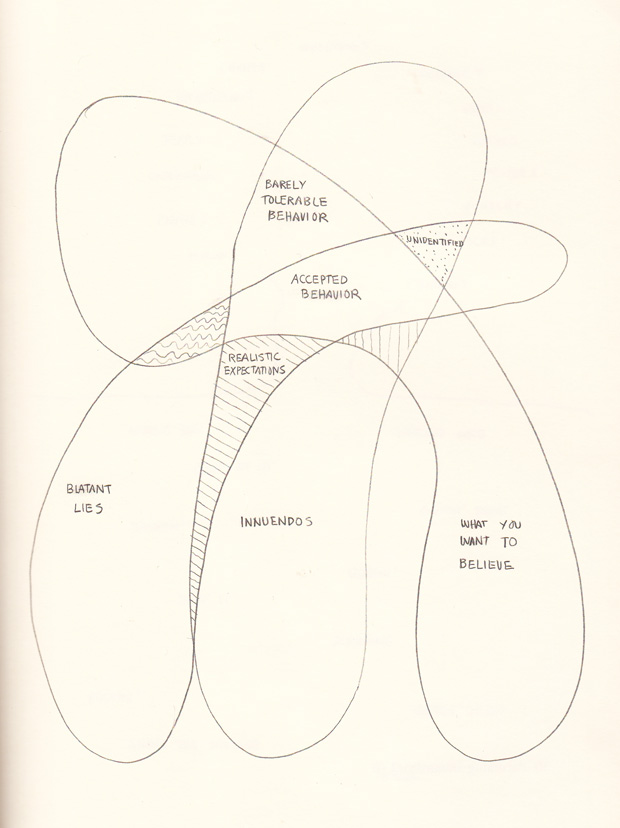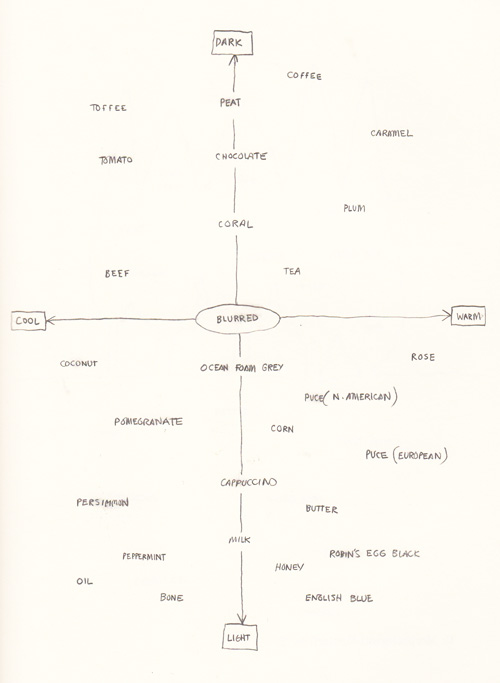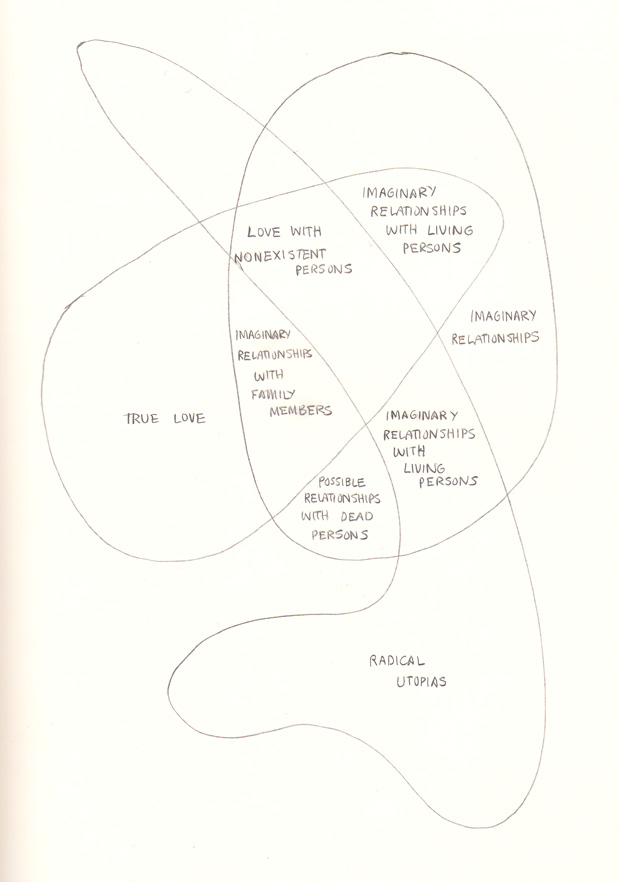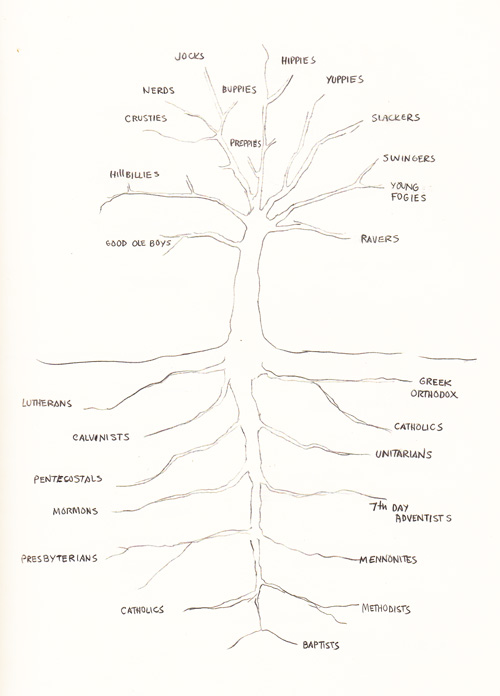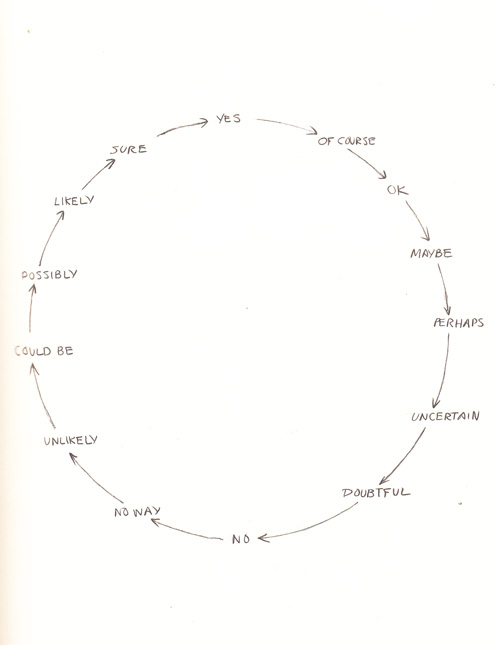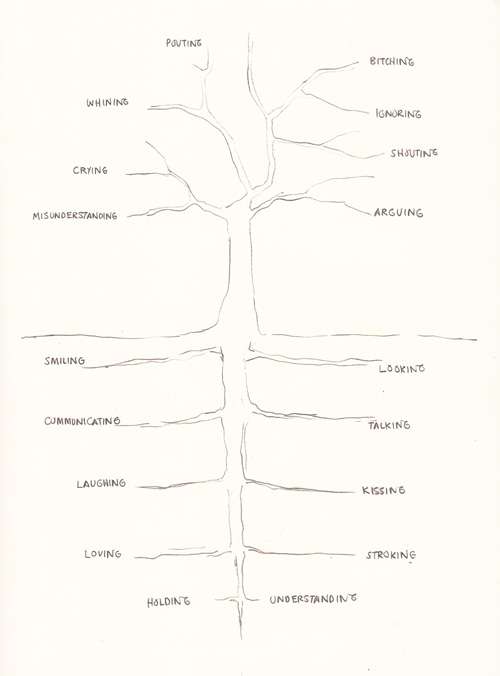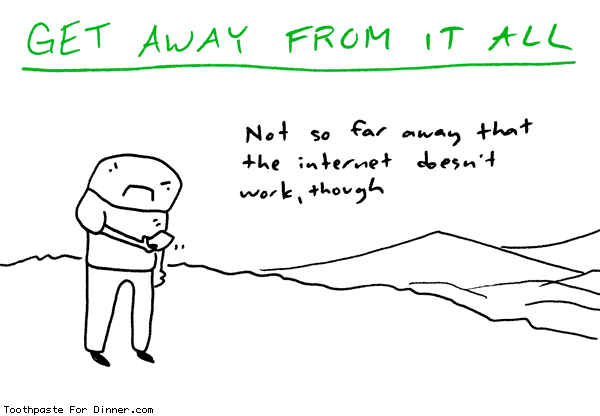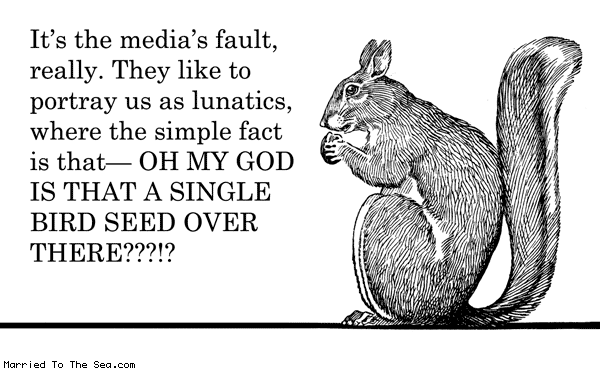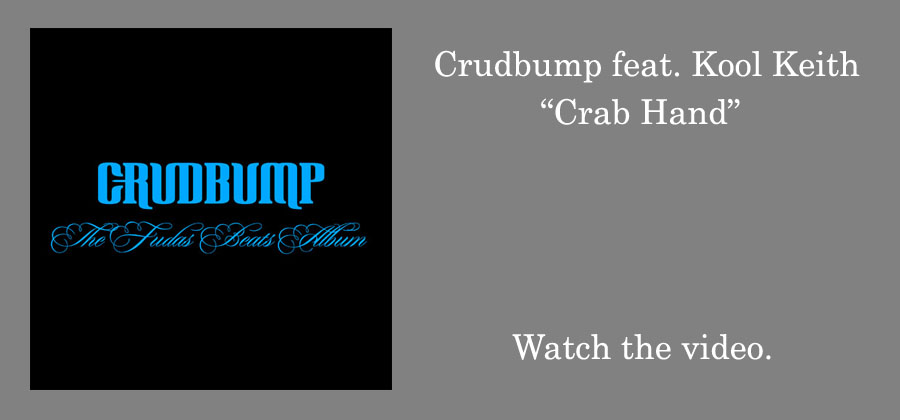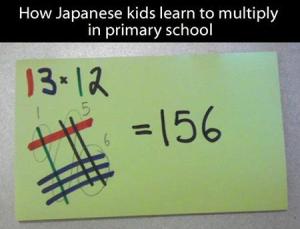“Science’s job is to map our ignorance.”
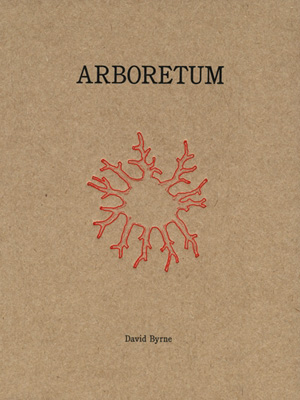 David Byrne may have authored both one of last year’s best albums and best music books, but he is also one of the sharpest thinkers of our time and a kind of visual philosopher. About a decade ago, Byrne began making “mental maps of imaginary territory” in a little notebook based on self-directed instructions to draw anything from a Venn diagram about relationships to an evolutionary tree of pleasure — part Wendy MacNaughton, part Julian Hibbard, yet wholly unlike anything else. In 2006, Byrne released Arboretum (UK; public library), a collection of these thoughtful, funny, cynical, poetic, and altogether brilliant pencil sketches — some very abstract, some very concrete — drawn in the style of evolutionary diagrams and mapping everything from the roots of philosophy to the tangles of romantic destiny to the ecosystem of the performing arts.
David Byrne may have authored both one of last year’s best albums and best music books, but he is also one of the sharpest thinkers of our time and a kind of visual philosopher. About a decade ago, Byrne began making “mental maps of imaginary territory” in a little notebook based on self-directed instructions to draw anything from a Venn diagram about relationships to an evolutionary tree of pleasure — part Wendy MacNaughton, part Julian Hibbard, yet wholly unlike anything else. In 2006, Byrne released Arboretum (UK; public library), a collection of these thoughtful, funny, cynical, poetic, and altogether brilliant pencil sketches — some very abstract, some very concrete — drawn in the style of evolutionary diagrams and mapping everything from the roots of philosophy to the tangles of romantic destiny to the ecosystem of the performing arts.Writing in the introductory essay simply titled “Why?,” Byrne considers our remarkable capacity for rationalization and the role of the non-rational in science:
Maybe it was a sort of self-therapy that worked by allowing the hand to ‘say’ what the voice could not.More than half a century after Vannevar Bush’s timeless meditation on the value of connections in the knowledge economy, Byrne echoes Stanford’s Robert Sapolsky and contributes a beautiful addition to history’s finest definitions of science:
Irrational logic — I’ve heard it called that. The application of logical scientific rigor and form to basically irrational premises. To proceed, carefully and deliberately, from nonsense with a a straight face, often arriving at a new kind of sense.
But how can nonsense ever emerge as sense? No matter how convoluted or folded, it will still always be nonsense, won’t it?
I happen to believe that a lot of scientific and rational premises are irrational to begin with — that the work of much science and academic inquiry is, deep down, merely the elaborate justification of desire, bias, whim, and glory. I sense that to some extent the rational ‘thinking’ areas of our brains are superrationalization engines. They provide us with means and justifications for our more animal impulses. They allow us to justify them both to ourselves and then, when that has been accomplished, to others.
If you can draw a relationship, it can exist. The world keeps opening up, unfolding, and just when we expect it to be closed — to be a sealed sensible box — it shows us something completely surprising. In fact, the result and possibly unacknowledged aim of science may be to know how much it is that we don’t know, rather than what we do think we know. What we think we know we probably aren’t really sure of anyway. At least if can get a sense of what we don’t know, we don’t be guilty of the hubris of thinking we know any of it. Science’s job is to map our ignorance.One of the diagrams from Arboretum, Roots of War in Popular Song (forest of no return), appears in the Art Pickings pop-up gallery and is available from 20×200. (In fact, it graces the wall I wake up to every morning.)
Thanks, Wendy
Donating = Loving
Bringing you (ad-free) Brain Pickings takes hundreds of hours each month. If you find any joy and stimulation here, please consider becoming a Supporting Member with a recurring monthly donation of your choosing, between a cup of tea and a good dinner:


Bringing you (ad-free) Brain Pickings takes hundreds of hours each month. If you find any joy and stimulation here, please consider becoming a Supporting Member with a recurring monthly donation of your choosing, between a cup of tea and a good dinner:
You can also become a one-time patron with a single donation in any amount:
 Brain Pickings has a free weekly newsletter and people say it’s cool. It comes out on Sundays and offers the week’s best articles. Here’s what to expect. Like? Sign up.
Brain Pickings has a free weekly newsletter and people say it’s cool. It comes out on Sundays and offers the week’s best articles. Here’s what to expect. Like? Sign up. 
